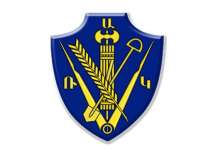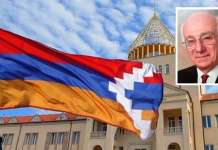By Edmond Y. Azadian
After meeting the historic watershed of the Genocide centennial with uncommon unity and solidarity, Armenia is geared to celebrate another existential event, the rebirth of the Armenian sovereign statehood on May 28, 1918.
For many decades, the act that restored Armenia’s statehood was treated with different interpretations. Today, at the third stage of the development of Armenia’s statehood, it is time to cast that historic event in its proper role as the date of the rebirth of Armenian statehood.
The next stage in that development was November 29, 1920, when Soviet rule was established in Armenia triggering controversies of equal intensity of the previous stage. The Soviet system was an infernal human experiment which took a huge toll in terms of blood and human life in Armenia. As contradictory as it may seem, the Soviet system brought stability to Armenia, contributed to its demographic development and produced the golden age of Armenian culture, scholarship and science.
The third stage began on September 21, 1991, by the collapse of the Soviet Union and the creation of independent Armenia. It is vain to compare or contrast those dates, because each one served as the building block of modern Armenian history.
The Soviet Republic of Armenia could not exist, if Armenia’s sovereignty was not established on May 28.
Similarly, had the Soviet Republic not survived, Armenians would wake up in a vacuum with no territory to claim as an ancestral homeland.
In each case, independence was thrust on Armenia by historic tides sweeping the region. Granted, to their credit, Armenians took advantage of the historic opportunities and carved out their nationhood.
As World War I was heading to its close, the Russian Revolution of 1917 took place and subject nations were left to their own devices. For a short period, Armenia, Georgia and Azerbaijan came together to form the Transcaucasian Seym which turned out to be a short-lived confederation, which disintegrated soon, leaving no alternative to its constituent nationalities but to declare independence.
In the meantime, Turkey was in recovery after its devastating defeat during the war. The reinvigorated Turkey was in haste to gobble up as much territory as possible in the Caucasus, taking advantage of the political vacuum created by the fall of Tsarist Russia. Armenians were facing an uncertain future. It was a moment of life and death.
After surviving the enormous blow of the Genocide, Armenians were able to muster enough strength to face 10,000-strong army of Vehib Pasha.
The ragtag Armenian forces scored three successive victories at Sardarabad, Bash Abaran and Ghara Kilissa to pave the way for Armenia’s independence.
At the Sardarabad front, Gen. Thomas Nazarbekian appealed to his soldiers: “We have to understand that if at this moment we do not achieve our freedom through an armed struggle, and build a happy future for us, history will not forgive us, because this opportunity will not come again for us nor to the future generations.”
In Bash Abaran, Armenian forces repulsed the Turks under the command of Davit Melkisetian, who was soon to be joined by the forces under the command of General Dro (Drastamard Kanayan). The latter used a diversionary tactic to force the Turkish army in the marshlands.
Nature also played its crucial role as many Turkish soldiers froze to death. The third victory was scored in Ghara Kilissa by Bey Manoukian, Garegin Nejdeh and Nikolay Ghorghanian.
During the war a young clergyman, Karekin Hovsepian, was encouraging Armenian forces through his inspirational leadership. That priest later rose to the position of the Catholicos of the Holy See of Cilicia, leaving behind a huge legacy of academic achievements.
Armenian forces fought ferociously, goaded by the thought of the bitter alternative. Vehip Pasha, referring to those battles in his memoirs wrote, “Armenians who fought in Ghara Kilissa deserve respect.”
Victories in those battles led to the declaration of independence on May 28, 1920. The actual declaration was read by the prominent intellectual Avetis Aharonian.
Thus the Republic of Armenia appeared on the world map.
All the warriors and their commanders deserve everlasting respect and gratitude by the future generations and posterity. Only General Dro later cast a shadow on his valiant record by allying himself with the Nazi forces during World War II. There is no room for political speculation for Dro’s choice, after witnessing how the Nazis treated the countries they occupied.
At this point, Armenia is clinging to dear life after massive emigration and desperately needs historic symbols for inspiration. And May 28 is one of those symbols, which bears an essential significance for our struggling people in their last piece of historic territory which is called Armenia.
May 28 is our living history.















